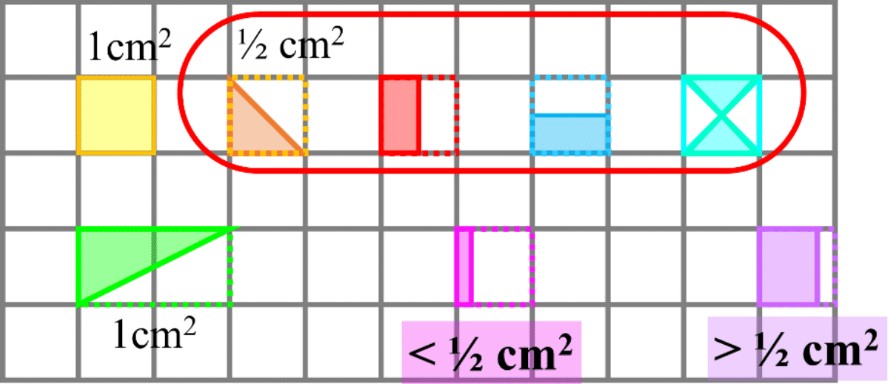Strategies for estimating area and perimeter with unit squares
Topic Notes
In this lesson, we will learn:
- How to count areas with squares and/or triangles (unit squares and half unit squares)
- How to estimate areas of shapes on an area grid
Notes:
- Review: finding perimeter and area for rectangular figures

- How do you find the area of shapes that are not made of squares?
- If you cut a square diagonally, you will get a triangle (half a square is a triangle)

- If you cut 2 squares diagonally (2 cm2), you will get half the area (1 cm2)
- There are other variations of getting half of a square (1/2 cm2 or 0.5 cm2)
- There will also be cases where you won't know the exact amount shaded in one square, but you can say whether it is more or less than half

- To estimate areas of a shape on a grid, we can get close to the actual area by:
- Counting all the whole unit squares (fully shaded in or covered by the shape)
- Counting all the half unit squares (most commonly the diagonal triangle)
- Rounding any squares shaded more than half up to 1 cm2
- Rounding any squares shaded less than half down to 0 cm2


